Letter recognition Normal Upper & Lowercase Letters Worksheets for Ages 4-7
22 filtered results
-
From - To
Discover our engaging "Letter Recognition: Normal Upper & Lowercase Letters Worksheets" designed for children aged 4 to 7! This resource provides fun and interactive activities that help young learners differentiate between uppercase and lowercase letters. Through a variety of worksheets, children will enhance their letter recognition skills while enjoying playful illustrations and exercises. Each worksheet is thoughtfully crafted to promote early literacy and boost confidence in reading and writing. Perfect for home or classroom use, these worksheets support a solid foundation in the alphabet, making learning a delightful adventure for ваше littlest learners. Start their reading journey today!
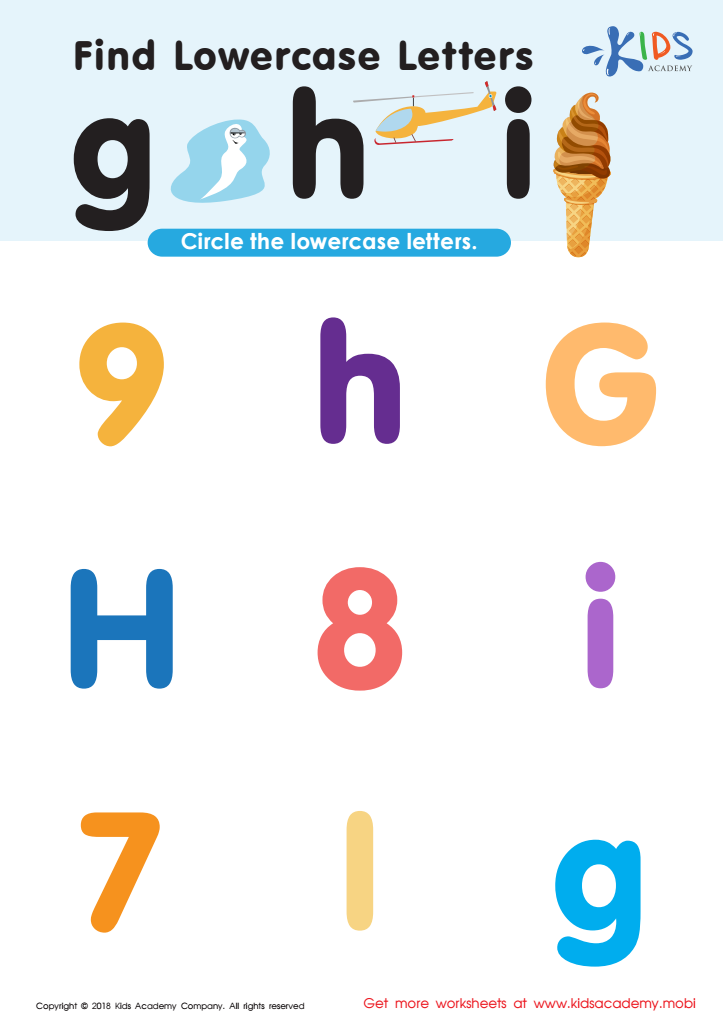

Find Lowercase Letters g h i Worksheet


I Stands High Worksheet
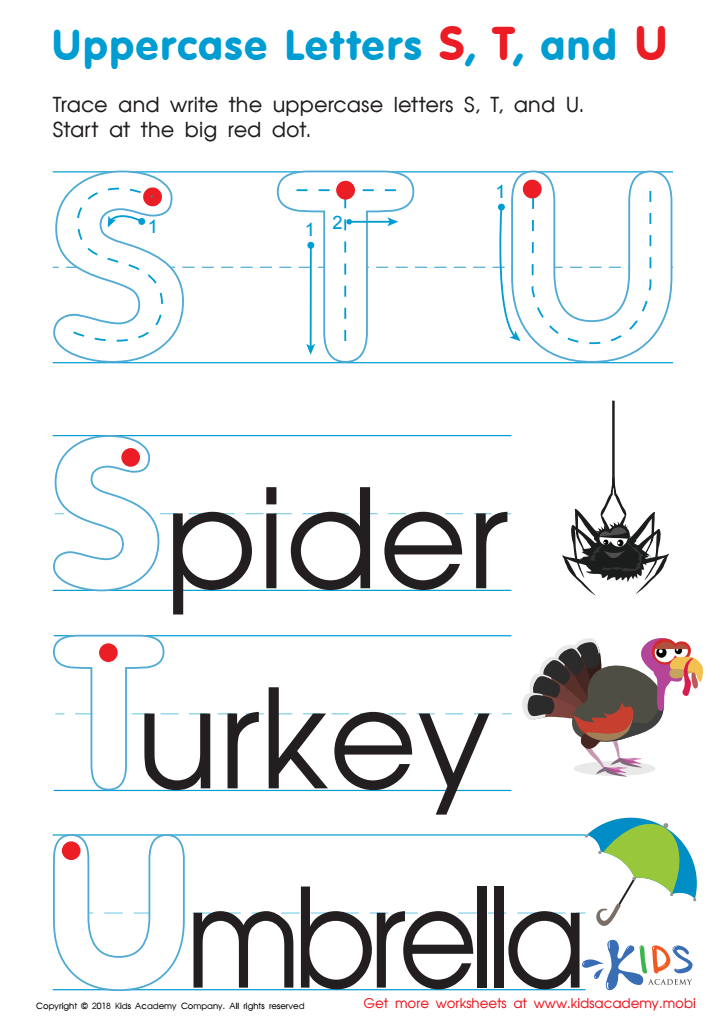

Uppercase Letters S, T, and U Worksheet
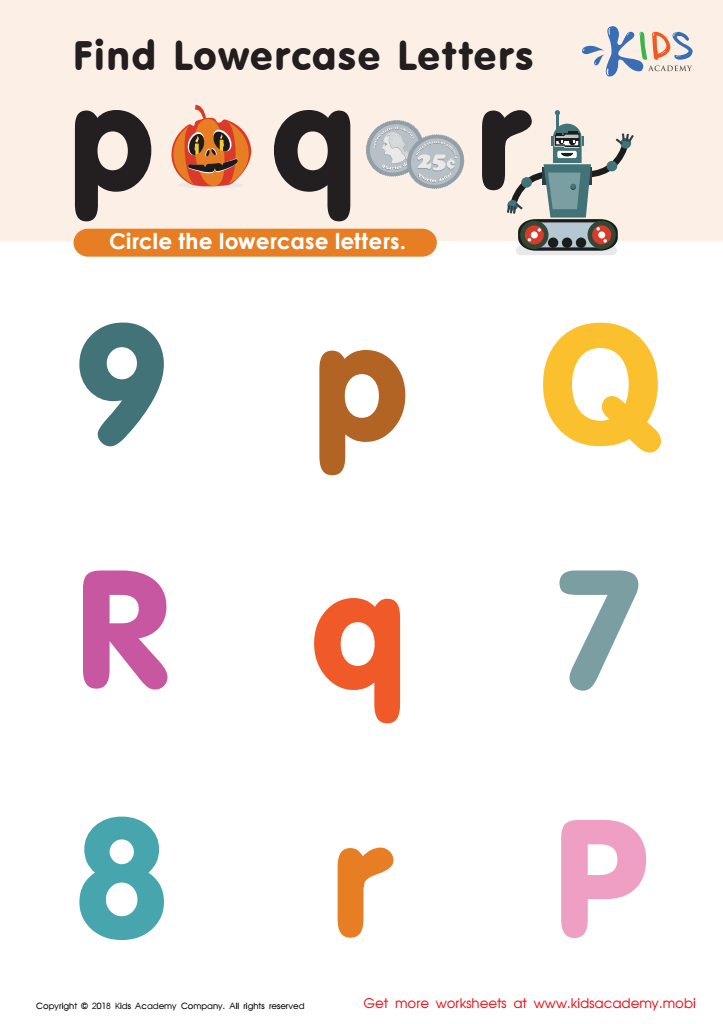

Find lowercase Letters p q r Worksheet
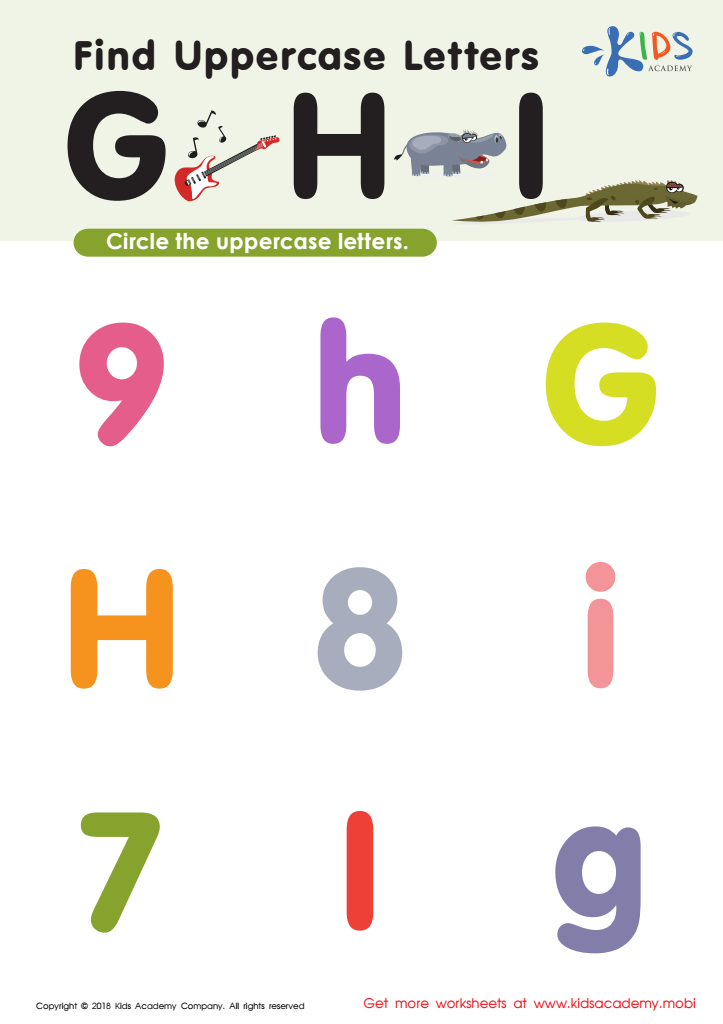

Find Uppercase Letters G, H, and I Worksheet
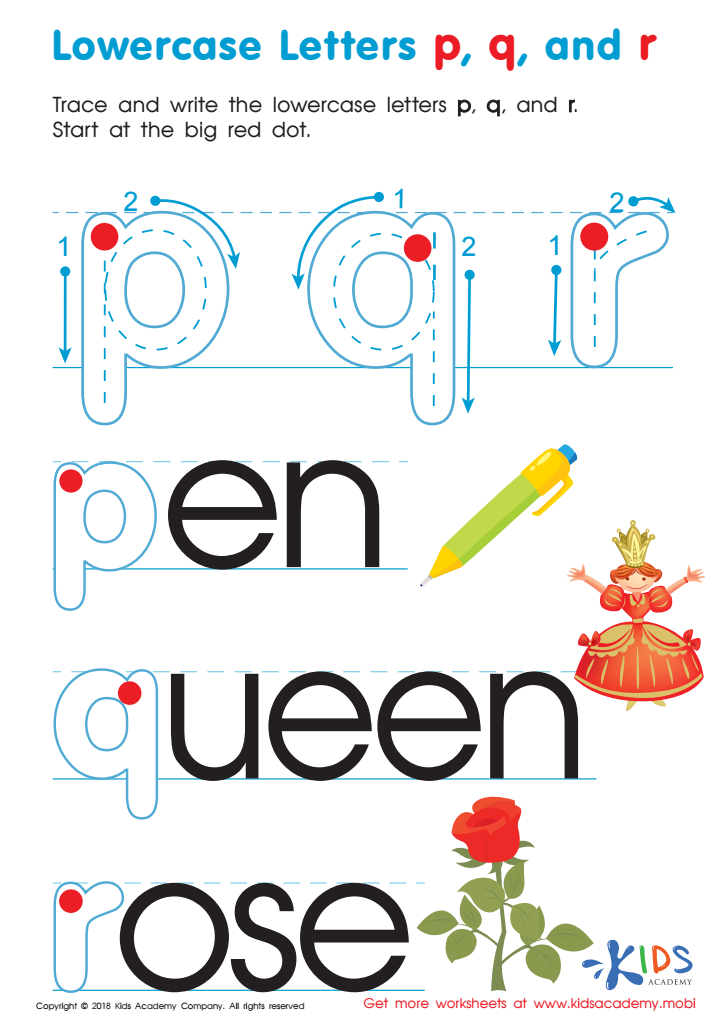

Lowercase Letters p q r Worksheet
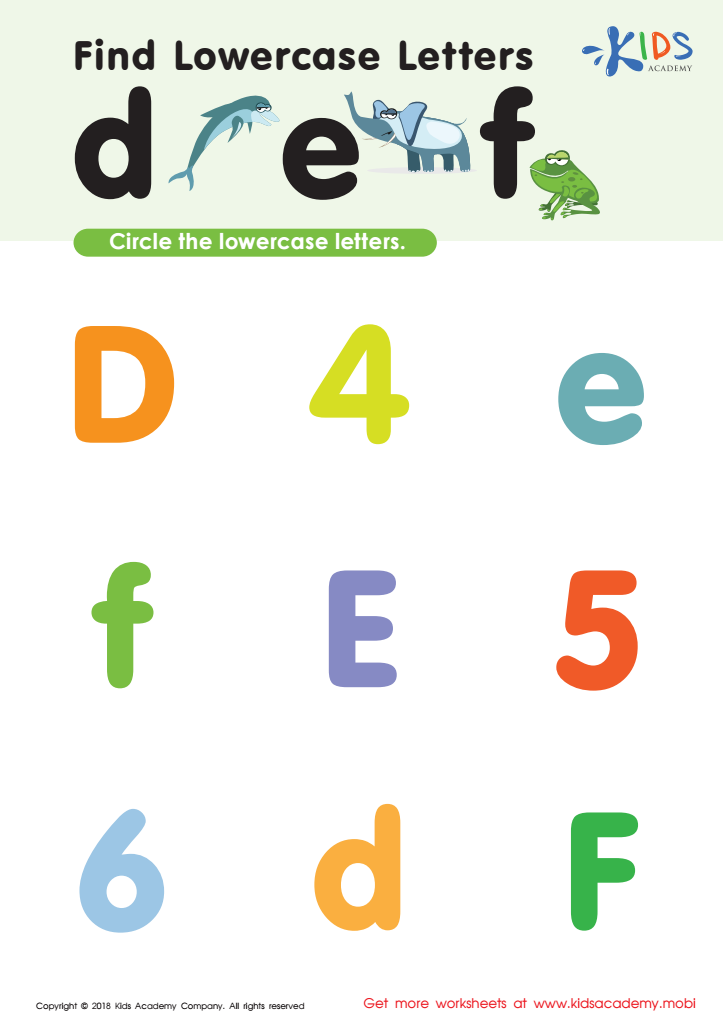

Find Lowercase Letters d e f Worksheet


Uppercase Letters Maze Worksheet
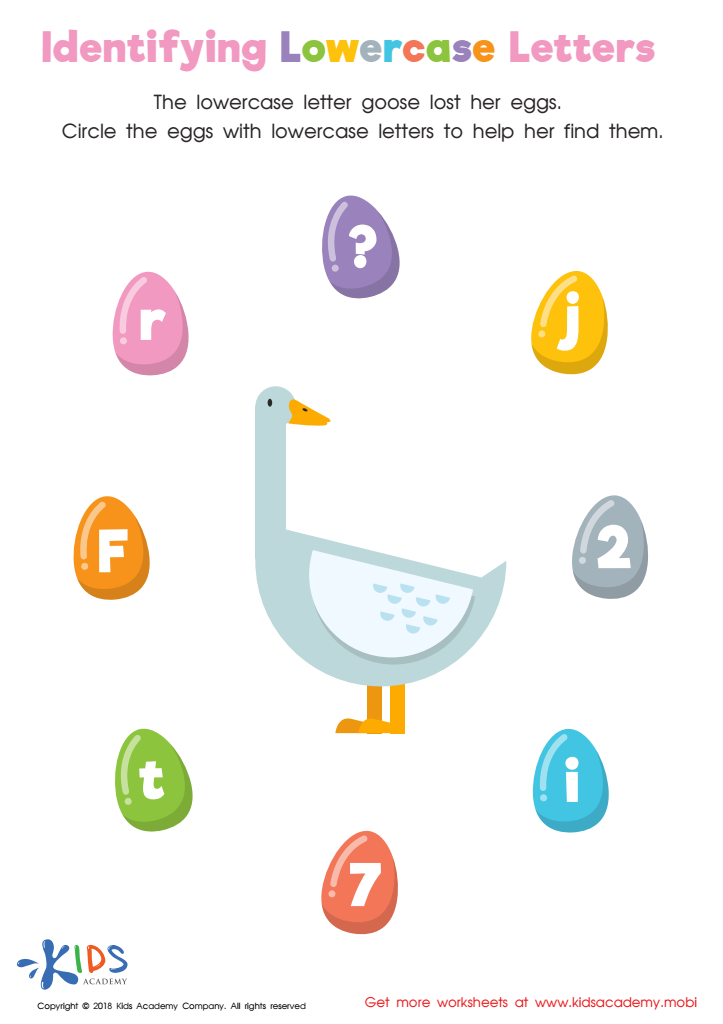

Identifying Lowercase Letters Worksheet


Find Uppercase Letters Worksheet


Find Uppercase Letters J, K, and L Worksheet
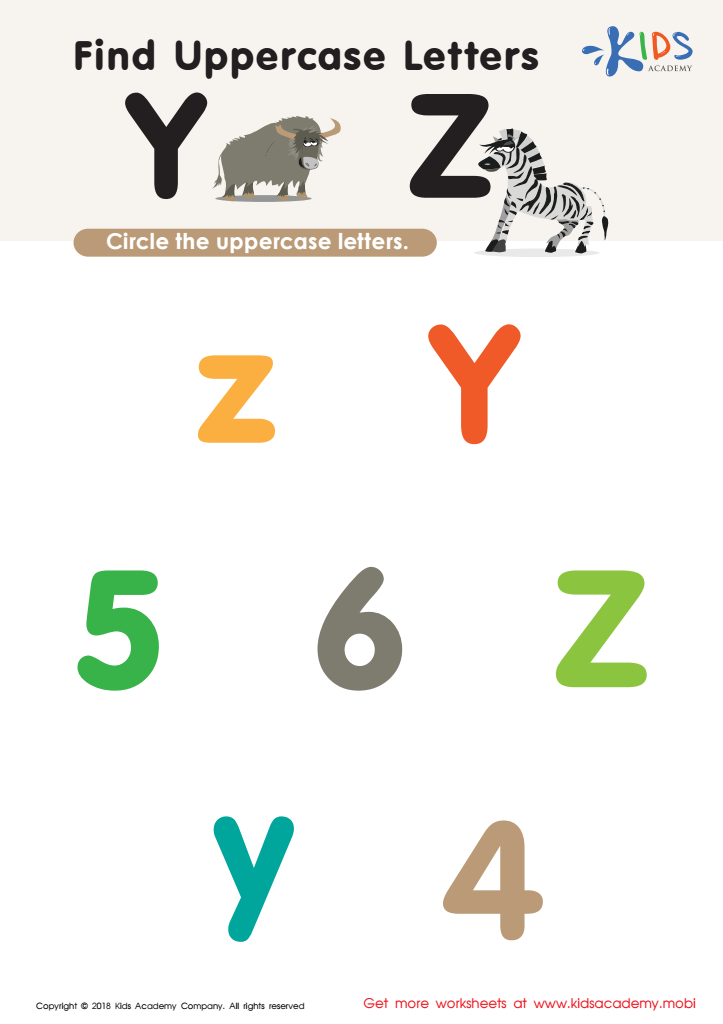

Find Uppercase Letters Y Z Worksheet
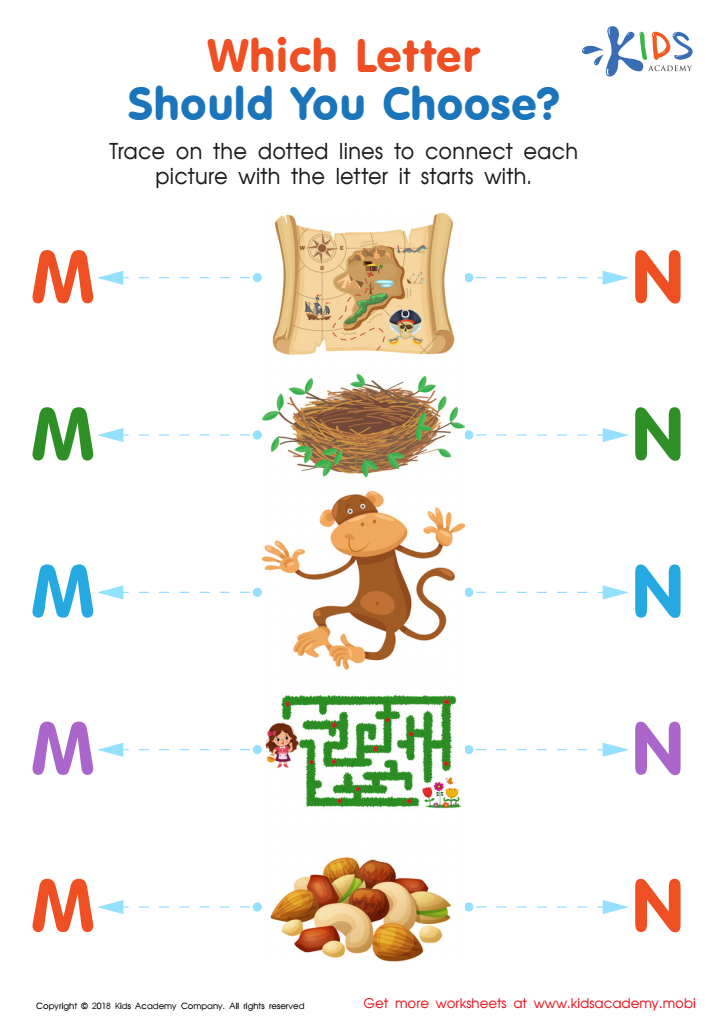

Which Letter Should you Choose? Worksheet
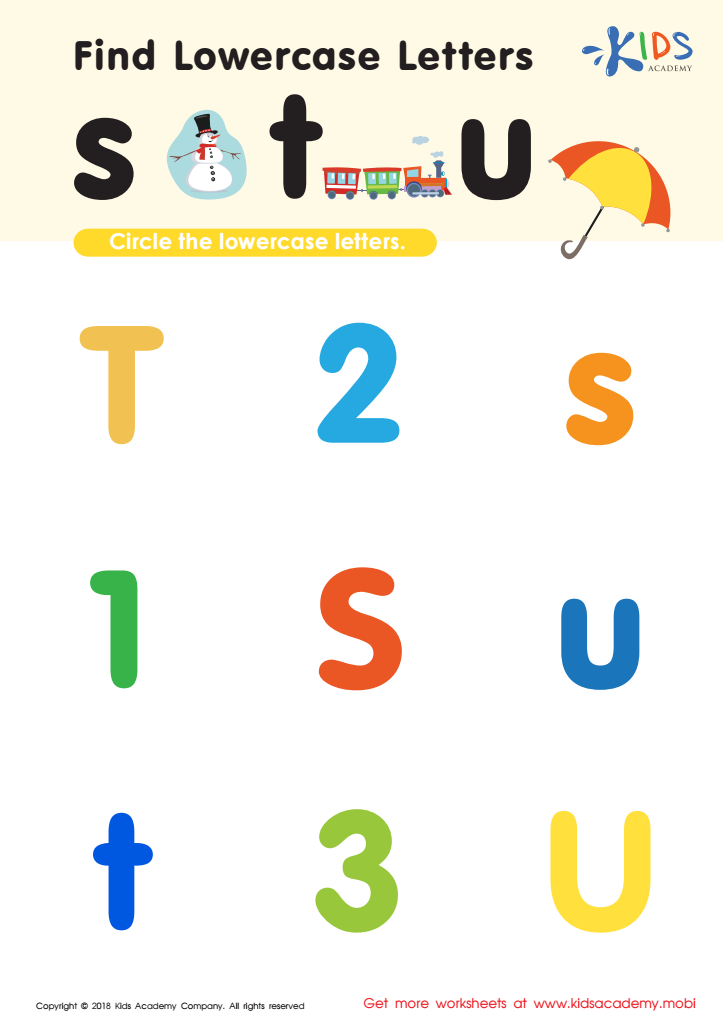

Find lowercase Letters s t u Worksheet


Find Uppercase Letters A, B, and C Worksheet
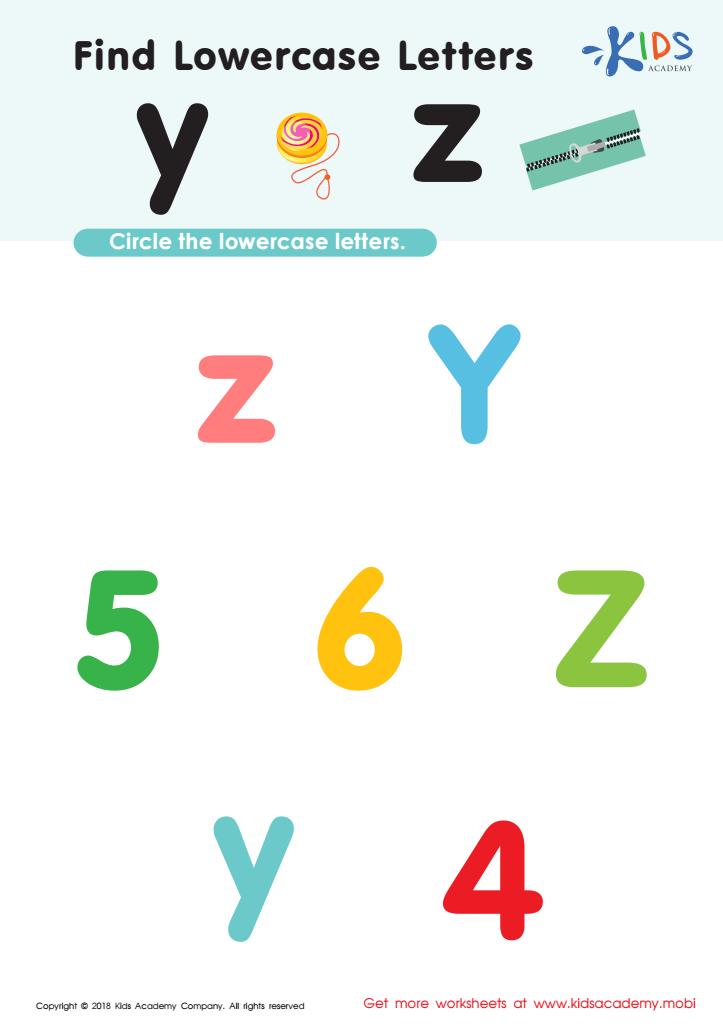

Find Lowercase Letters y z Worksheet


Find Uppercase Letters V, W, X Worksheet
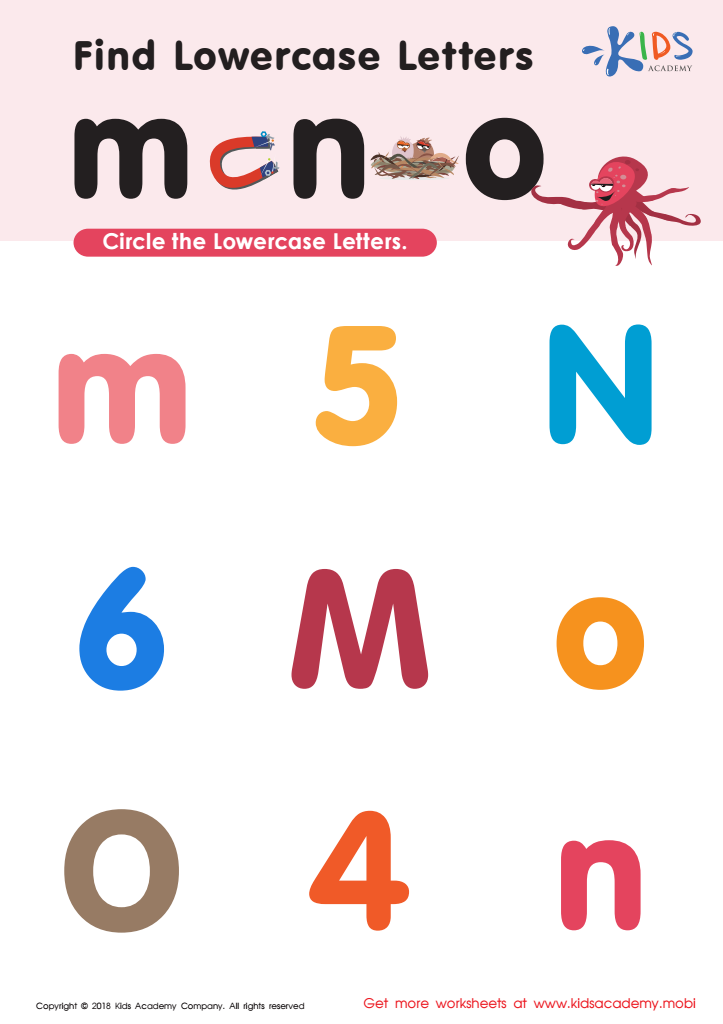

Find Lowercase Letters m n o Worksheet
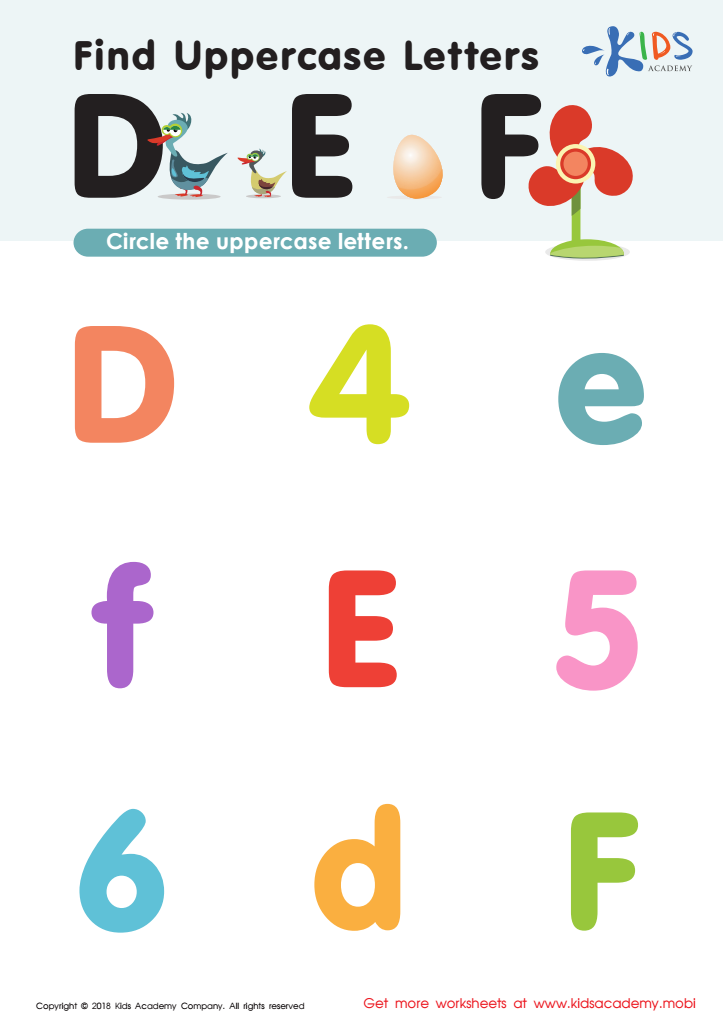

Find Uppercase Letters D, E, and F Worksheet
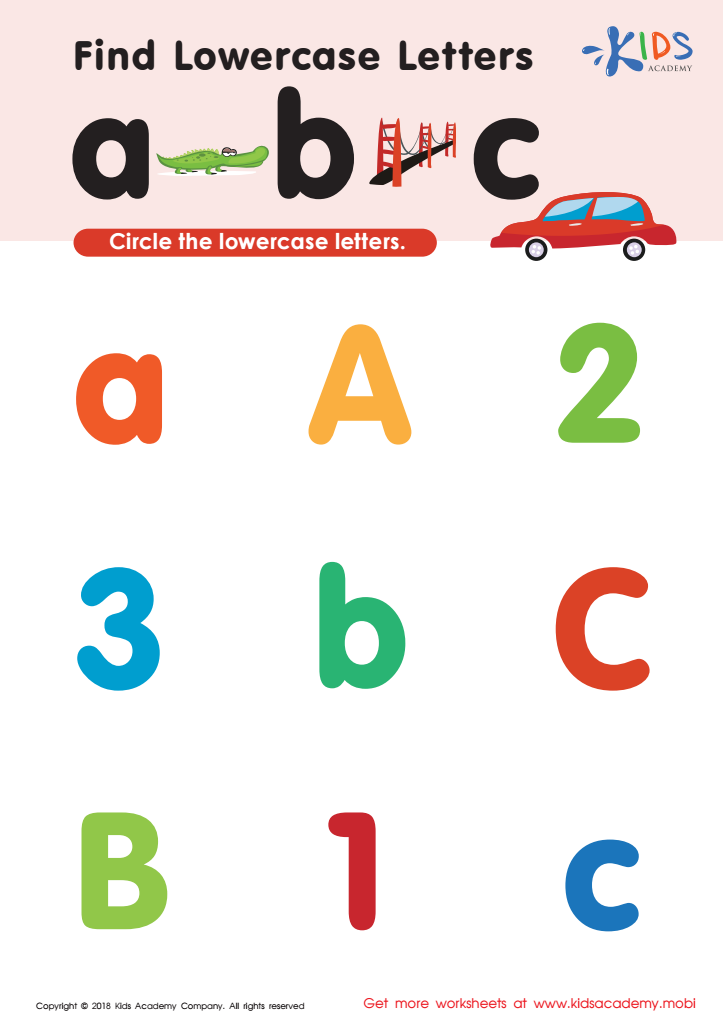

Find lowercase letters a b c Worksheet
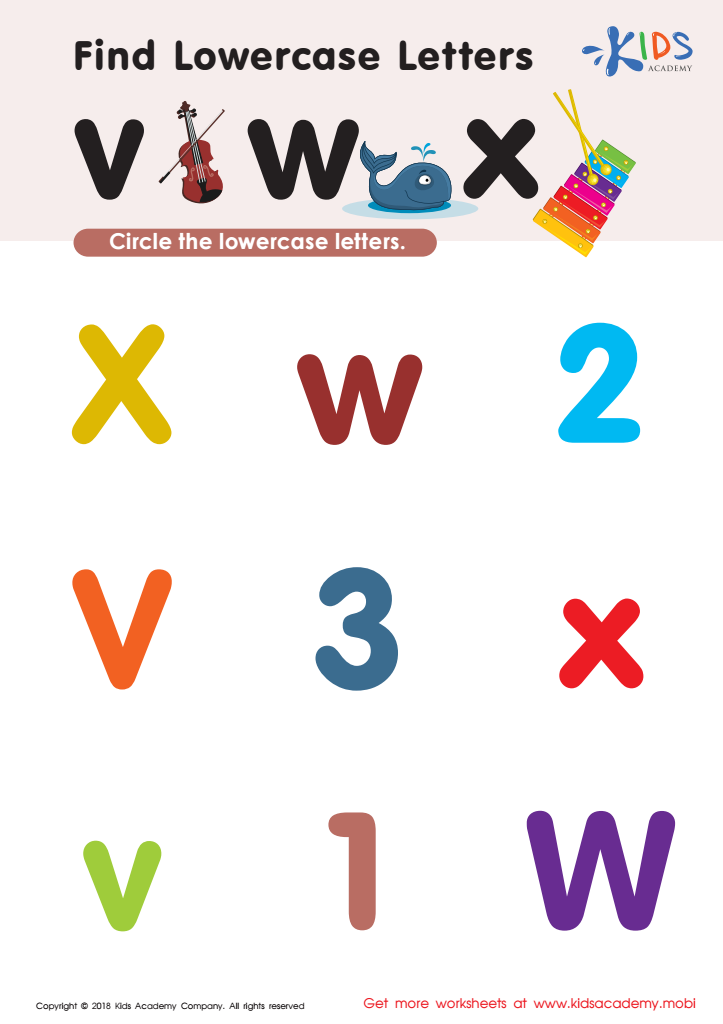

Find Lowercase Letters v w x Worksheet
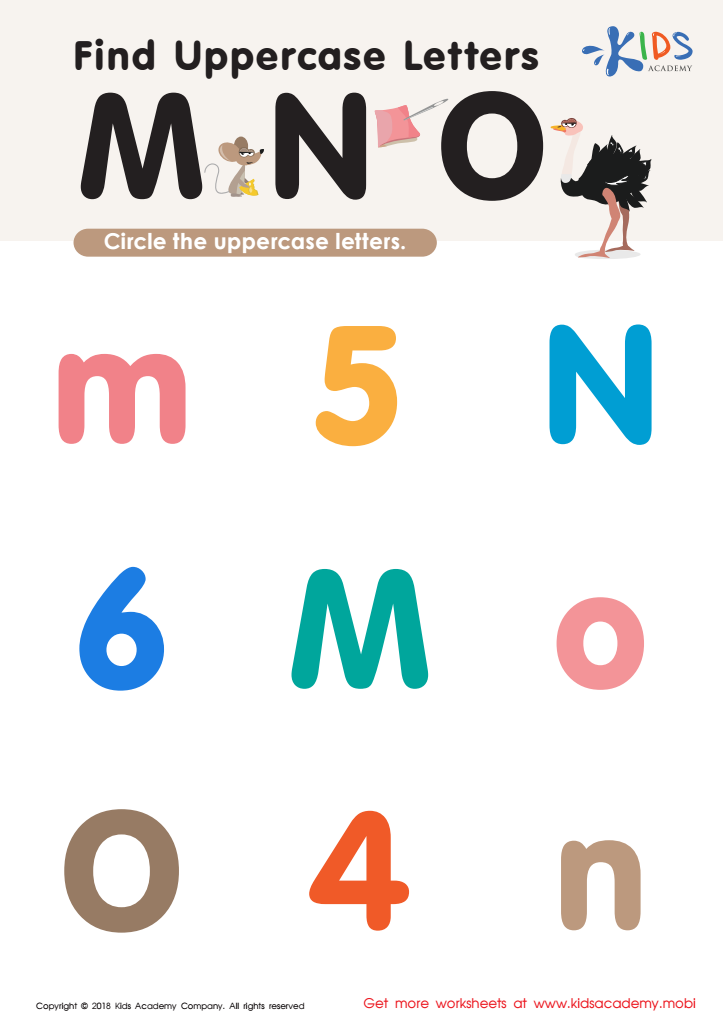

Find Uppercase Letters M, N, and O Worksheet
Letter recognition is a foundational skill critical for literacy development in children aged 4 to 7. Understanding both uppercase and lowercase letters allows children to read and write effectively, as they encounter these forms in different contexts. For parents and teachers, fostering this recognition at an early age is vital for several reasons.
Firstly, letter recognition aids in phonemic awareness, helping children understand that letters correspond to sounds, which is essential for reading. As they grasp this concept, their confidence in tackling new words increases, laying the groundwork for fluent reading and comprehension.
Moreover, familiarity with both letter cases supports writing skills and aids in distinguishing between words and sentence structures. Capital letters typically indicate the beginning of sentences or proper nouns, while lowercase letters are used elsewhere. This knowledge enhances their ability to organize thoughts, a critical aspect of communication.
Additionally, children who recognize letters early are more likely to develop a love for reading and writing, fostering lifelong learning habits. Engaging in activities that promote letter recognition—such as games or reading together—creates a supportive learning environment that nurtures curiosity and interest. Overall, prioritizing this skill has lasting impacts on a child's educational journey and success.
 Assign to My Students
Assign to My Students












